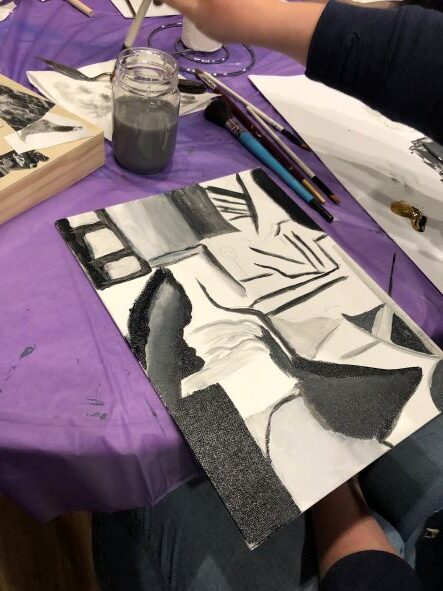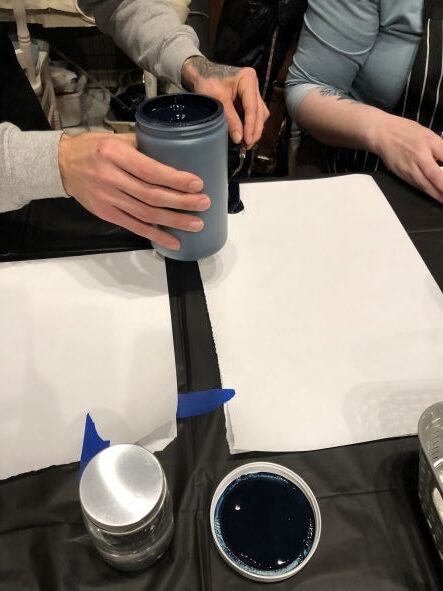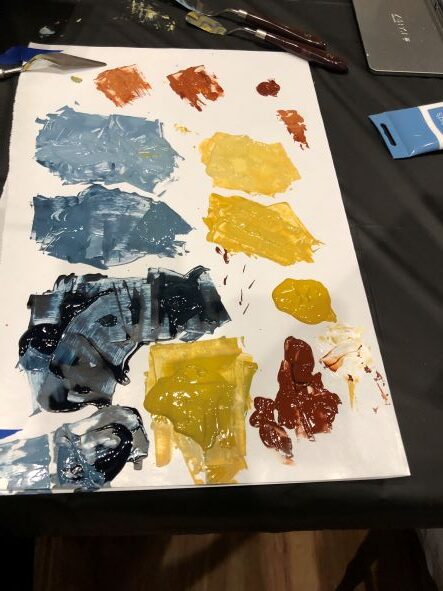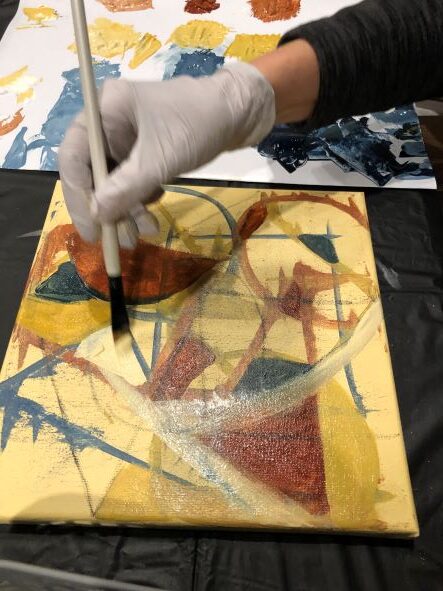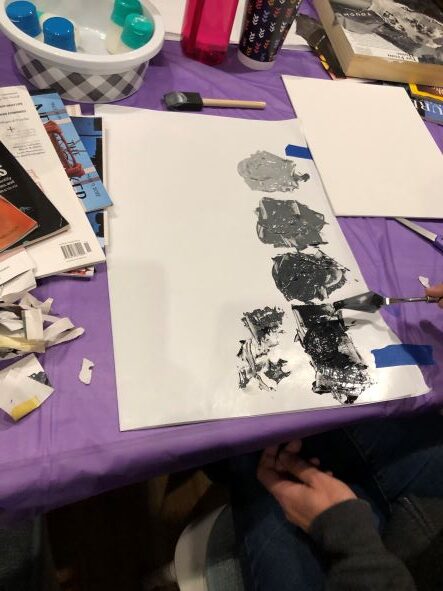
Exercise in Collage Interpretation in Acrylics – Black to White
What a joy to spend an evening with my grown up children, watching them create with teaching artist, Colin Molaski! My daughter flew in from Las Vegas for a visit before leaving for Brazil for the holidays. She is co-owner of Refind Creations and it’s always great to have her in the studio!
My son lives locally and both are amazingly talented artists. They joined Colin’s class in Acrylic Abstractions and had a wonderful time! If I wasn’t in medical imaging where I create beautiful images every day, I would likely be a black and white photographer, so the technique of this class really resonated with me.
Colin says this is the number one exercise for thinking about composition. It will force you ask visual questions, stay engaged, and focus on creativity in a whole new way. Is it touching the edge? Does it have energy? How does it flow? This is all about timeless elements and engaging. Not too busy, not too boring.
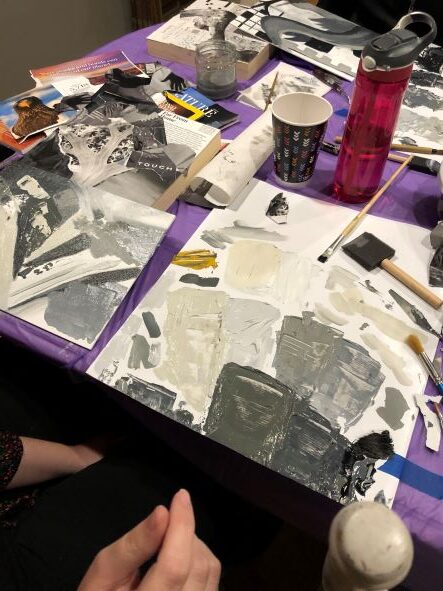
These techniques can be used for the rest of your life as you build your creative tool kit!
Colin recommends that if you are struggling to get started on your next project, take random things around the house, build a 3D sculpture, and try to paint or sketch that. This lets your mind loosen up and start to feel creativity flow.
So, what exactly are the steps for this very creative process?
Step 1 – Tear or cut out pieces from magazines that are black and white – 15 to 20 pieces. All shapes and textures; all kinds of words or shapes. Spend no more than 20 minutes doing this.
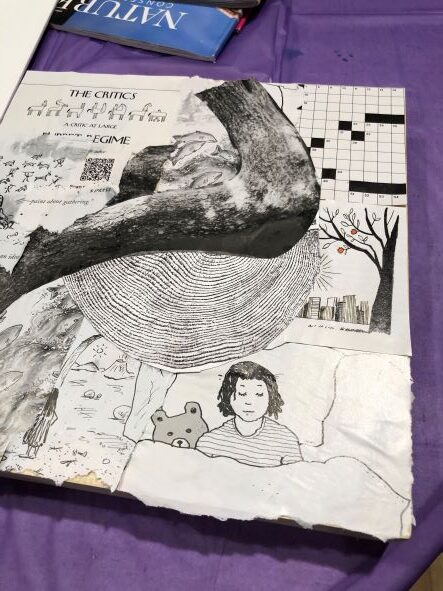
Step 2 – Put Black, white and yellow ochre acrylics on your palette
Mix your palette – dividing into dark, medium, light and very light. You will be training your eye to see the varied values. Add white to the black to make shades of gray. Add yellow ochre to the shades of gray to create a warm palette to compliment the cooler grays.
Step 3 – Cover your entire background (cardboard, wood crate canvas or whatever substrate you like) with 8 pieces of your magazine sections. Leave nothing showing.
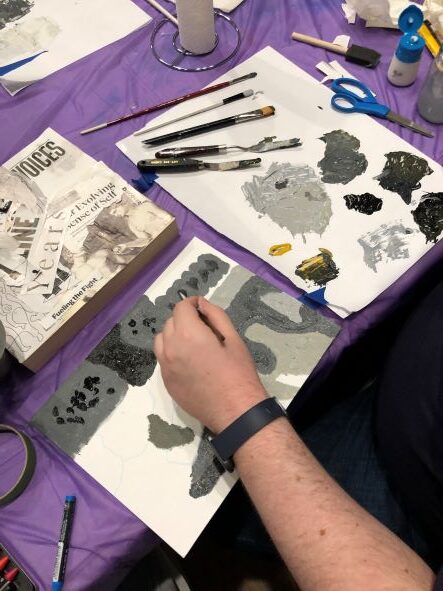
Step 4 – Observing your collage, choose shapes and angles you see to sketch a guide on a canvas board
Once you start blocking the shapes and turning the canvas, you’ll find the moment where the magic happens! You’ll forget to focus on the task at hand and create. Free up your mind and let your creativity begin to flow. Add lines, change shapes, and let your eye decide if you are excited or if you hate it. Don’t be afraid to throw in a streak of white, a line of black. Use your palette knife to spread, scrape, and change the direction. Scrape mid tone over a dark tone to create depth. If you cover the line, reintroduce it! Be fearless.
Step 5 – Once you have a good basis, just ignore the collage and start responding to the painting itself.
- Supplies:
- Magazines
- Black, White and Yellow Ochre Acrylic Paint
- Cardboard
- Canvas Board
- Glue
- Palette Knife
- Brushes
Each artist came up with beautiful designs and the process evoked emotion, frustration, re-focusing, and creating.
Enjoy their beautiful masterpieces!
